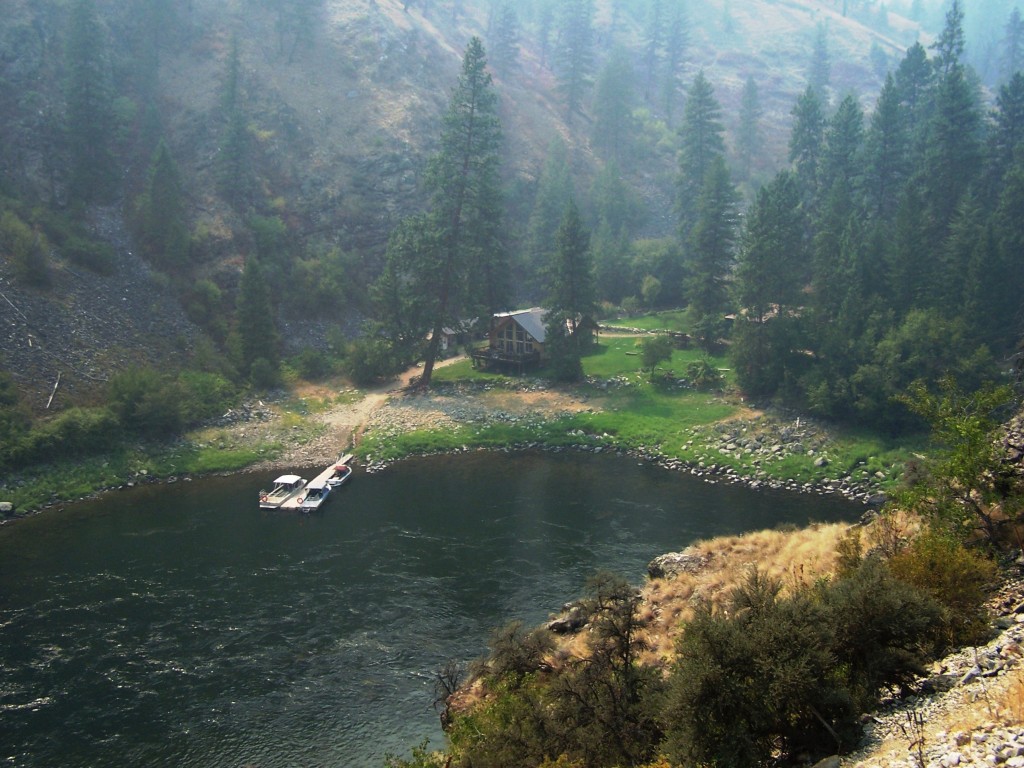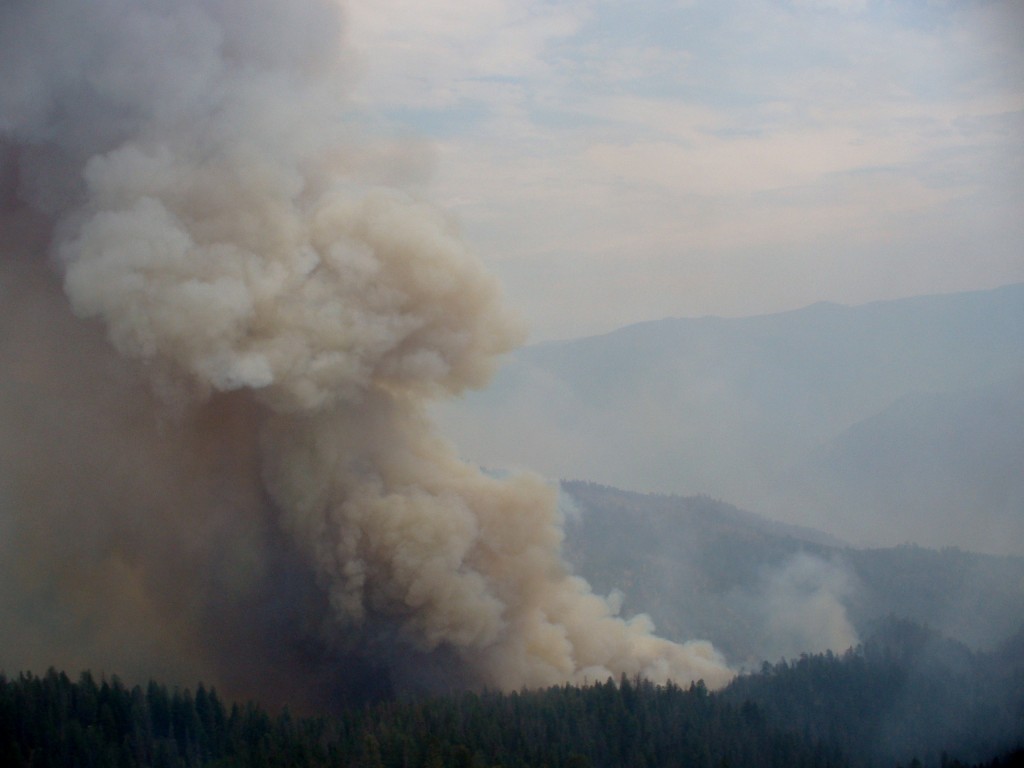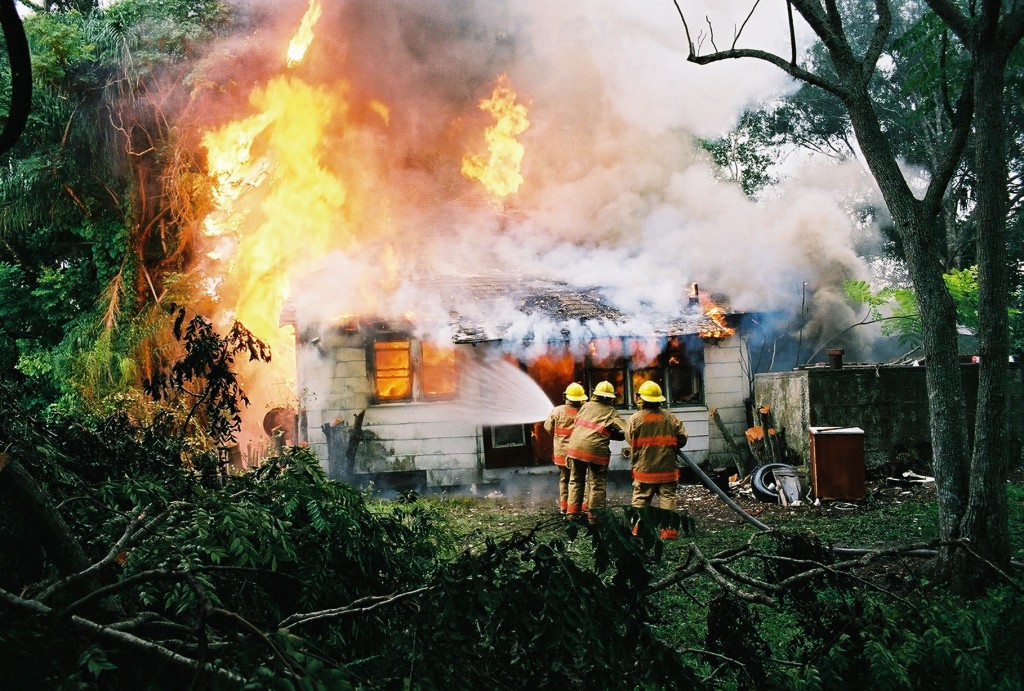I have made a career responding to all manner of disasters and emergencies. This has included earthquakes, hurricanes, floods, wildfires, and search, rescue, & recovery. Over time, I have also been involved in a few events as a victim. I think having seen both sides of these things gives me an interesting take on survival preparedness.
The most common activation I receive is to respond to a wildfire. And while this might be a short term event, over almost before it begins, the results can be devastating to the unprepared. So I would like to discuss how to prepare for a wildfire. Since this is such a large topic, I am going to limit myself to steps you can take to defend your home, or BOL (Bug-Out-Location.)
To many homeowners, the idea of a wildfire is pretty overwhelming. It can be a huge dominating force of nature that seems like there is no way to prepare for or hold out against.
It can seem that a raging forest fire is simply too large, too fierce, and too unpredictable to deal with. But I believe there are ways to reduce the threat, and make your home much safer. You can take decisive action before, during, and after a wildfire to preserve and protect what’s yours.
The first things you should consider are items you can work on before there is a fire event. Many of the things I will mention are detailed on www.firewise.org, which is a very well known and respected program the Federal Forest Service sponsored. I will duplicate some of their advice, but you should still check them out to see what else they have to offer. You might have seen on the news where an entire community is ravaged by a large fire, but certain homes remain untouched. It could seem that this is pure chance, or luck of the draw, but that isn’t completely true. There is a science to making your home more fire resistant. (I hesitate to say fire proof, because unfortunately, in extreme conditions, sometimes your best efforts might still be in vain.)
The first and primary step is to consider something called “defensible space.” How much of a break is there between the forest and undergrowth, and your home? If your home sits with rank vegetation chest high, all the way within 2 feet, then you are in more danger than someone with a manicured lawn out to the recommended 100 feet. Next, examine your home construction. If you have a wooden roof, what we used to call shaker shingles, then you will be much more flammable than a metal, or tile roof. But even a metal roof can be compromised by debris like pine needles, and leaf litter. If you have gutters, clean them out minimally yearly, right at the end of winter, and any time they fill with pine needles and burnable litter. Third, consider what else in the yard might carry fire. When you pick your landscaping, choose trees like Oaks over more flammable trees like Pines, and Palm trees. Even shrubs can make a huge difference. Many people love clumps of Saw Palmetto in their yard, but it is known to be high in volatile oils. Much better to have a similar looking plant like a Cycad, (Namia for example,) which is a lot less flammable. Also look at any vehicles you might be leaving behind, and don’t park them right against the house. If the boat or truck does catch fire, better to lose that one item than to have it impinge the whole home.
So, you have done your best with “before”. You hear that a large fire is growing downwind of your home. The house is prepped, your important papers are copied to a thumb drive. The car is packed. Even though the fire is not technically within sight, just the fact that it exists and is threatening means that your next actions are what I would call “during” the fire event. Now, I do not recommend that anyone ignore an evacuation order to take further preparation steps. But sometimes, you know the fire is coming, and have an hour or two left before you have to leave. Often in the western states, you may know days in advance. You must consider how easy to get away from your home it is. If you live on a narrow mountain road, overgrown with trees, leave early. You might have to move a downed limb, or go around an obstacle.
But if you do have time, use it calmly and wisely. Many times I see folks out spraying their yard or roof with water hoses to wet them down before the fire gets there.
Unfortunately, due to the extreme heat pushed ahead of a large fire, this doesn’t often do any good. The preheating from the fire, caused by hot dry winds, simply evaporates this water, and the fire does what it wants regardless. So what can you do that would have impact on the fire? First, be sure you have closed all the windows. Seal any openings that would let an ember get into your home. Next, look again at the yard. IF YOU HAVE TIME, and if it needs it, mow the yard again. This sounds silly, but consider this: Flame length is usually 2 to 3 times the height of what is burning. Since you have kept the woods themselves 100 feet away, is your grass tall?
Very short lawns may not carry a fire at all, but if they do, then the 1” grass should give up to a 3” flame. Or in unkempt lots, 2 foot grass will probably give a 6 foot flame. Which do you want licking the sides of your home, 3 inch flames or 6 foot flames? Next, continue focusing on the yard. If there is a propane grill, don’t leave it against your home. Move it out to the most bare clearing you can away from any vehicles. Leave the propane tank out of any building. (Firefighters will appreciate being able to see it and identify it as a hazard.) In fact, if you have flagging tape, tie some to the grill.
Finally, go back through the house, use a checklist to make sure you have everything you can not replace, and can transport. Now I listed a bunch of stuff to do, but most important is that you leave in time to get away easily. It might be prudent to send the family on ahead, and take care of those things you have time for, then follow them. Nothing in what I write is intended to tell you to stay when it is unsafe, or will become unsafe before you can get away. Follow any evacuation plans your local fire agency publishes.
Now the fire has gone. You are headed back into your home. What should you be doing? First, understand that wildfires can cause lingering hazards. Trees may fall completely, or just limbs might fall off of otherwise healthy trees. The baked soil might be loose and more likely to give way, so you might see rolling rocks, mudslides, or have banks give way that were safe before. This process can occur weeks and months after the fire has passed through.
As you begin cleaning the yard, be aware of any impacted trees, and go ahead and have them removed. A final consideration, light, flashy fuels can “reburn”. The fire moves very quickly across the surface of the fuel, but leave behind stuff that can still catch fire again later. Especially true of this are pine trees. Scorched needles will fall within a few days, and provide a blanket of burnable fuel on the ground.
So if you live in such an area, rake the needle drop away from your home and structures. And revisit the Firewise website I mentioned above. As you replace your plants, do it in a way that makes your home safer and safer.

Next time, I will speak to strategies if you are away from home, in the woods, and encounter a wildfire.






